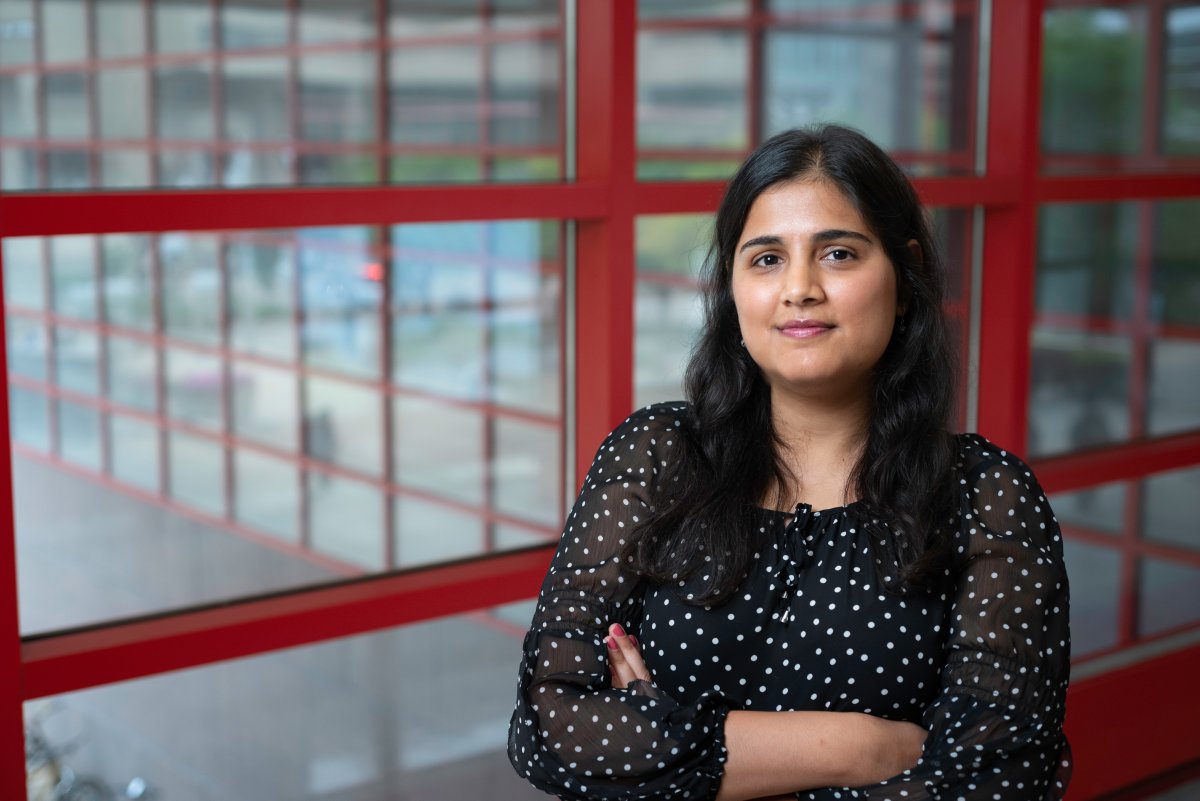Meet the Faculty - Harmanpreet Kaur

Tell us about your journey to the University of Minnesota.
I started taking computer science classes in high school back in India. It was a nice middle ground between the core curriculum in hard sciences and real-world applications that impact day-to-day life. I really enjoyed the creativity it afforded while being a rigorous discipline. That led me to pursue computer science as my undergraduate major.
I actually did my undergraduate degree at the University of Minnesota. I took a few honors courses that were taught by GroupLens faculty members and got involved with research in their lab. That encouraged me to explore Ph.D. programs in human-computer interaction and I went to the University of Michigan for that work. I was still in touch with the faculty at Minnesota and staying up to date with their work. When I was looking for jobs, it worked out that Minnesota was also hiring in my research area. I think this department is really unique. The faculty are very collegial - it’s not just something you say, but you can actually see it in the way that people interact with one another. It’s also one of the biggest human-centered computing labs within a computer science department in the country, so it was a great fit.
We would love to hear more about your research!
I am broadly interested in human-centered artificial intelligence (AI). My work includes building better AI systems that are grounded in human values, and helping people better interact with and understand AI. One AI system that I built was intended to prioritize people’s happiness and productivity at work. The system took into consideration individuals’ emotions and their work tasks to suggest times to take a break or transition to a new task. I like designing these systems in domains where we can augment or amplify what people already do everyday.
The other half of the equation is helping people understand the technology and how it can benefit them. As AI becomes ubiquitous in our day-to-day lives, there is an urgent need for people to learn how to use these systems and truly comprehend how they work. If people understand how the systems work, we can prevent potential harms before they happen. So I work on designing explainable AI systems where the AI provides explanations for its outputs and reasoning. A significant part of my research has to do with how people interpret AI outputs and determining ways to make outputs even better. One problem we run into is that people aren’t always rationally internalizing information, so how do we account for potential cognitive and social biases that people have when they are taking in new information.
What do you hope to accomplish with this work? What is the real-world impact for the average person?
In the past few years, the rate at which AI has become embedded in our daily lives has increased exponentially. Everyone has direct access to AI applications - whether that’s directly using them as a user or being indirectly affected by them in some way. There are generative AI applications like ChatGPT and Dall-E, but there is also AI being used in the criminal justice system, healthcare, and education. When these technologies are being used on such a large scale, it becomes even more important that the people building these technologies understand how they work. That is the only way we can prevent potential harms and biases. I design and evaluate these technologies to make sure that they benefit humans in safe ways.
What courses are you teaching this fall? What can students expect to get out of that class?
I am teaching a graduate seminar on human-centered AI - CSCI-8980 - Human-Centered AI: An Introduction to the Applications, Theories and Methods. It is primarily directed towards Ph.D. and masters students. We read important papers and articles about the recent research on this topic. The class is formatted as a discussion for people to bring in their diverse perspectives and ideas on the problem. This class is an introduction to the applications of human-centered AI, as well as the underlying theory. There is a semester-long project to culminate the course.
What do you do outside of the classroom for fun?
I really like painting, hiking and being outside. You will either find me cuddled on my couch painting, or the complete opposite, being outside and enjoying the weather.
Do you have a favorite spot in the city?
I love the Mississippi River Trails. That’s my favorite walking spot. I enjoy going to the Stone Arch Bridge and exploring all of the restaurants and shops in that area. I also really like the Minneapolis Institute of Art and Walker Art Center.
Is there anything else you would like to share?
I am actively recruiting undergraduate, master’s and Ph.D. students to work in my lab. So if you are interested in the topics of human-centered computing and AI, please reach out to me!